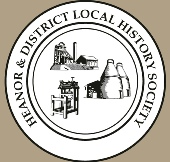
Heanor & District Local History Society
Ormonde Colliery
The last of the deep-
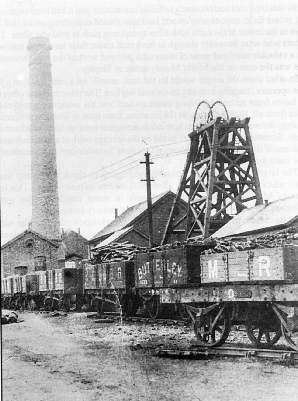
The neighbouring Loscoe Colliery closed in 1933, and in 1938 the Butterley Company also closed Bailey Brook Colliery, concentrating their operations in the Loscoe area entirely on Ormonde. In the same year, the pit introduced conveyor belts, which was the first move from traditional handling of coal. In 1941, the Kilburn seam was closed, and Ormonde now concentrated on the inferior Blackshale seam, which was marketed under its Yorkshire name of Silkstone Coal.
Following the end of the war, the coal industry was nationalised, and Ormonde became
part of the National Coal Board No.5 Area, based at Eastwood Hall. During the 1950s,
No. 5 Area was one of the most cost-
The NCB invested significantly, installing the most modern machinery and equipment in order to improve output. In 1952 the first Power Loader machine was installed in the Low Main Seam, followed shortly afterwards by an automatic Trepanner machine. In 1961, the NCB chose Ormonde to test a new piece of equipment nicknamed ROLF (Remotely Operated Longwall Face) in the Piper seam. This was intended to totally remove the need for miners at the actual coalface, with the entire cutting operation being remotely controlled from a console some distance away. While it wasn't 100% successful at Ormonde, it undoubtedly contributed to the massive increase in productivity and went on to shape future developments nationally.
With other pit closures in the area (Woodside, Mapperley, Coppice), No. 5 Area was closed. In 1967, Ormonde was transfered to the North Derbyshire Area of the NCB at Bolsover. Although deep mining had finished in the Heanor area except for Ormonde Colliery, a number of pumps at other mines, notably Woodside, had to be kept going to ensure that Ormonde did not flood, which added considerably to the running costs of the pit.
Ormonde Pit produced its last coal on 25 September 1970. If ever the phrase "the end of an era" were justified, this is one such occasion.
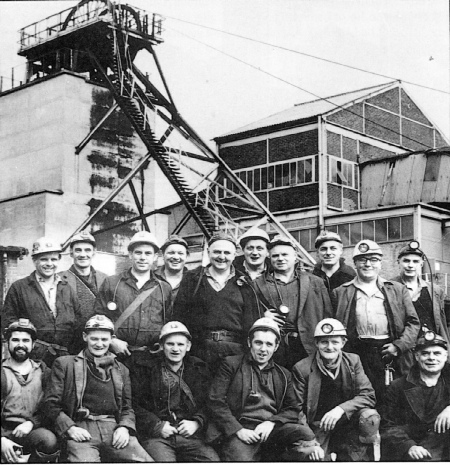
One of the last shifts at Ormonde, 1970
The photographs to the right were taken shortly after the closure of Ormonde Pit, by Walter Sharp.
Mr Sharp had been a miner at the colliery for many years, and was also Secretary of the Union Branch. He subsequently became a security guard on the site whilst it was demolished. The fourth photograph includes Walter's dog Jason.
The Society would be pleased to hear from anyone who worked at Ormonde Colliery,
or any of the other local pits, who would be prepared to put their memories into
writing -
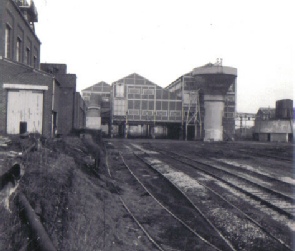
Wheer are t' gooin' when Ormonde shuts?
"Wheer are t'gooin' when Ormonde shuts?"
You hear where e're you go -
"Ah have na' made me mind up yit!"
Or, "Ah have na' exed ah Flo!"
Or, "Ah'm thinkin' o' gooin' t' Babbin'ton!"
Or, "What abert Moorgreen?"
"Ah know they anna' long t' goo -
Tha' knows pal, what ah mean.
It doesna' matter wheer tha' goos
Tha'll 'ay t' flit agen
But it tha' goos a long wee off
What abert your Gwen?"
"Ow's gettin' close on twenty quid
At that place wheer 'ow wocks
An' 'ows only packin nylon tights -
Or is it nylon socks?"
"An thi' dowter's got a good job theer
An' in'ta co'tin stong?
Soo ah canna' sei them flittin'
Booth on 'em bein' sa' throng!"
"It's a thing tha's got ta study
They's sa many things to watch,
An' niver mind what they tell yer -
They's bernd ta ba a catch!"
"A pal o' mine went t' Calverton
An comm ert aw' i' biles
But could they get a doctor?
They warna' one fa' miles!"
"Stuck reight ert i'dd country
His wife began ta' sicken,
'Ow hadna' hafe a achin' back
Throw gooin' tater-
"An' the rate they're gettin coal ert ner
These new pits not last foriver
'As t' watched it commin' up?
It's like a long dark river!"
"Soo wheer are ta' gooin' when Ormonde shuts
An' it's no good exin' Flo
An it's no good exin' gaffer -
'Cos hey doesna' bluddy know!"
From The Rhymes of a Marlpool Miner,
by Owen Watson, 1975

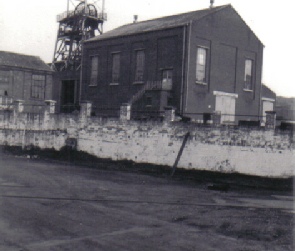
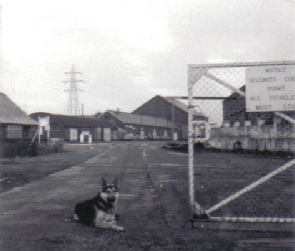
We are grateful to Karen Eley for allowing the Society to publish the photographs taken by her grandfather Walter Sharp.